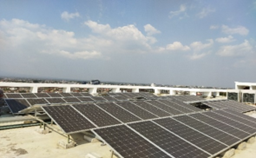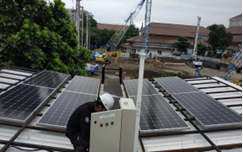As an institution of higher education, UGM has the capabilities to research future-strategies to reach net-zero and pioneer sustainable practices. UGM aims to reach its net-zero targets by 2050. This involves reducing its campus building footprint and transitioning to renewable energy sources.
Improving campus building footprint is necessary to reach net-zero, because larger or inefficient building footprints could lead to higher energy consumption for lighting, heating, cooling, and maintenance. By optimizing UGM’s building designs, reducing excessive footprints, and focusing on energy-efficient infrastructure, UGM can significantly lower energy demand and reduce carbon emissions.
As of 2024, UGM has recorded the following campus building footprint data:
Total Gross Floor Area: 1,600,021.9 m²
Annual Water Consumption: 97,829.10 m³
Campus Population: 70,728
Annual Electricity Usage: 16,779,810.48 kWh
Renewable energy sources are also essential to reaching net-zero because they replace carbon-intensive energy sources like coal, oil, and natural gas with clean, sustainable alternatives. By using such sources, UGM can drastically reduce its Scope 2 emissions from electricity consumption. Renewable energy not only lowers carbon emissions but also benefits the UGM’s long-term energy supply and cost savings.
In 2024, the amount of energy generated on campus through renewable sources totaled 1,101,982.5 kWh.


The PV system installed at Smart and Green Learning Center and Department of Electrical Engineering and Information Engineering, Faculty of Engineering
With clear goals and measurable progress, UGM is steadily advancing toward its vision of becoming a net-zero campus by 2050. Through reducing building footprints, improving energy efficiency, and expanding the use of renewable energy, UGM is not only reducing its environmental impact but also setting a leading example for sustainable transformation in higher education. These efforts reflect UGM’s commitment to creating a greener future for its campus, its community, and Indonesia.
